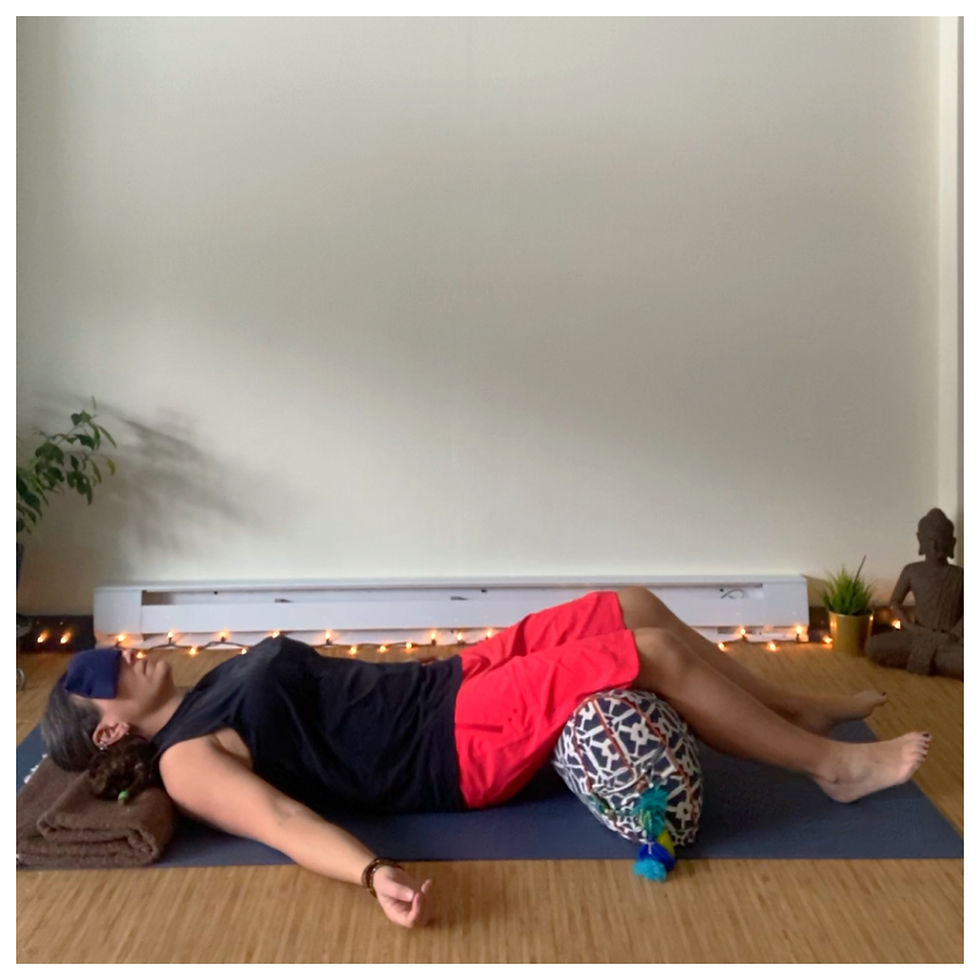Influence that Pain in your Neck through Mindful Yoga
- Joy Zazzera

- Mar 9, 2021
- 4 min read
Updated: Mar 15, 2021
Neck pain is an incredibly common musculoskeletal issue, 2nd only to low back pain along the spine, affecting 1/2 the world’s population at one point during their lifetime.

Most neck issues are postural issues. As a society, we tend to hold a lot of tension in our neck. Our neck muscles are responsible for holding up, stabilizing and moving our head - a structure on average that weights between 10 - 12 lbs. If we neglect to practice mindful connection to the muscles and vertebrae in our neck, we will eventually experience diminishing capacity for control, fine-tuning movements, alignment and placement of the head in relation to the shoulders and ribcage. These diminished capacities are a result of our most injurious repetitive motion - our daily posture. Because we have adapted to a posture that places the head forward, not only are we adding even more load to our spine, we also experience decreasing strength and endurance of the deep muscles that center and stabilize the head, keep our cervical vertebrae aligned in a clear and open channel and our spinal cord unkinked.
If we are ever going to affect the neck, we have to understand its many influences. There are actually many variables that can contribute to neck pain including but not limited to:
🧩Constant forward head position a result of the weakened condition of the deep stabilizing muscles and even from our tendency to always be looking forward in life.
🧩A greater degree of flexion resulting in an abrupt angle at the most mobile portion of our spine, generally the result of a combination of constantly looking downward and weaker deeper stabilizing muscles.
🧩Our tendency to want to control things results in gripping, rigid and bracing muscular holding patterns around the neck that then creep into the upper back, chest, shoulders and jaw and face.
🧩Poor breathing strategies when it comes to both everyday breathing and breathing choices during stressful situations.
🧩A compression of the spinal disc or spinal nerves as a result from weakened muscles and irritated tissues surrounding the boney structures, or a bulge or herniation.
🧩A change to the boney tissue causing osteoarthritis or disc degeneration as a result of aging. 🧩Other common injuries like spinal stenosis (a narrowing of the spinal canal), muscle strain, and even whiplash from a motor vehicle accident or some other trauma.

Realizing improvements regarding pain regulation and motor control around the neck requires a baseline of body awareness.
We can do this through...
✔️Practicing releasing and turning off the major mover muscles through techniques like palpitation and Myofascial therapy so we can specifically visualize and work with the weaker tissues underneath and increase their strength and ability to better support the head.
✔️Practicing tuning into the smaller muscles that help form a sleeve of support around the cervical spine.
✔️Practicing segmental awareness to improve our proprioception - our ability to better control where our head is in relation to our shoulders and ribcage - as well as the joint position, control and stability among the cervical vertebrae. even though our spine moves as a whole, the ability to visualize segmental control actually improves the communication along the spine and allow more greater freedom of movement and flexibility.
✔️Practicing retraining new movement and sensory patterns that build capacity to better endure our postural habits and the demands we place along our spine.
✔️Practicing ways to decrease stress and emotional distress with simple techniques aimed at downshifting the nervous system as an important piece to the larger puzzle.

It might sound complicated but with the right teacher you can begin to release the fear of movement you have when it comes to your head and neck. Moving slowly, mindfully and purposefully more regularly will help produce progressive changes that result in improved capacity for greater resilience in your upper body and optimal alignment and function in your cervical spine.
You don’t have to just live with your pain. And you don’t have to rely solely on medications to help you keep it under control. A mindful movement experience practiced with considerate intention to create real changes in the body can have long-term effects reaching far beyond the improvements you’ll feel along your cervical spine. The key is finding a teacher with both the training of the anatomical structures, function and dysfunction and the passion for helping people improve control over their body and how they relate to and experience pain and discomfort.
At Yoga with Joy I teach simple and effective movement with a purpose, that is also supported by helping you develop basic anatomical awareness within your body which can serve as a complement or alternative (for those seeking one) to other modalities for pain relief such as chiropractic care, medication and massage. A steady yet simple diet of mindful movement and inward connection can create positive changes in the brain, lessen the amplitude of your daily aches and pains and make moving in the world a more pleasurable experience.
#YogaForDailyLiving #BodyAwareness #AlternativeMedicine #ArthritisRelief #RangeOfMotion #PainRelief #PostureImprovement #StrongNeckMuscles #EaseHeadaches #ReduceLowBackPain #StopCompensating #MoveBetter #BalancedSpine #IntegrateAndConnect #BetterBreathingStrategies #RelaxedNervousSystem #SimpleMovementTechniques #DoYogaWithJoy #YogaTeacher #MayfieldPa #ScrantonCarbondaleHwy #BeginnersThriveHere







Comments